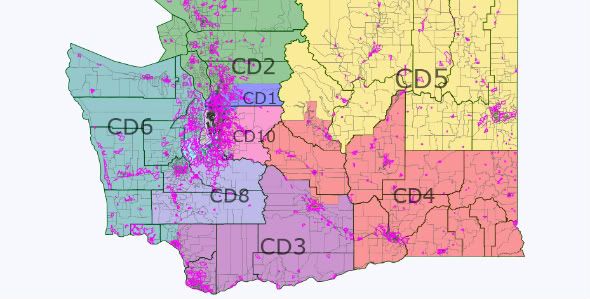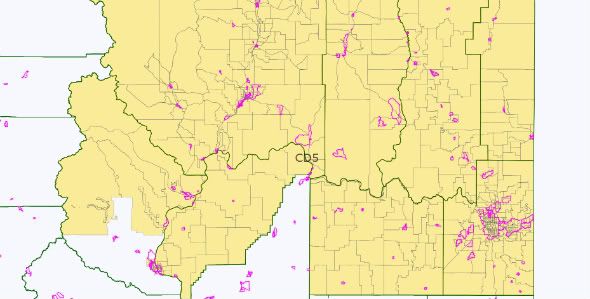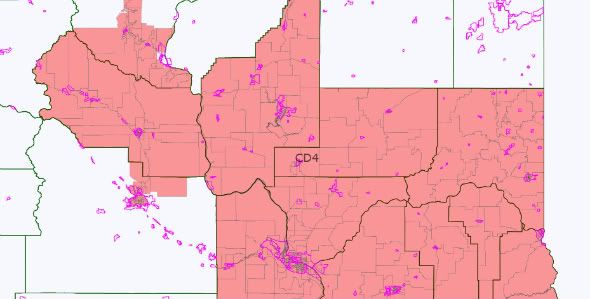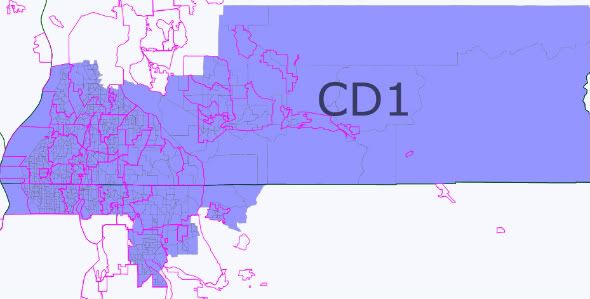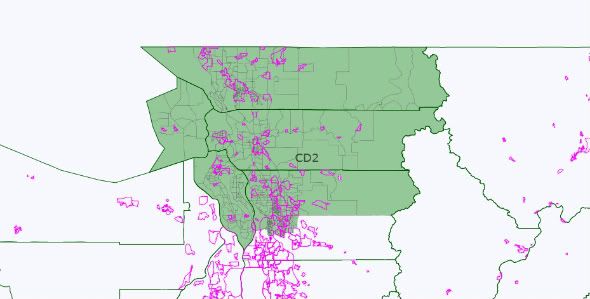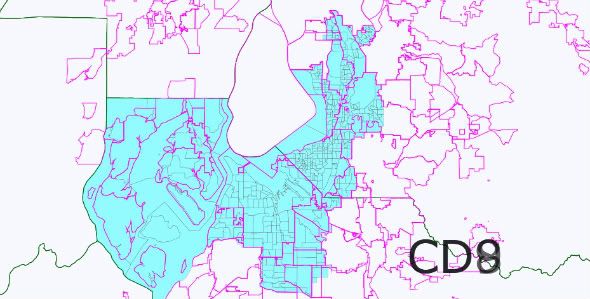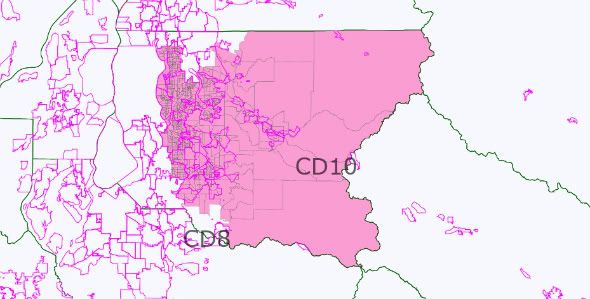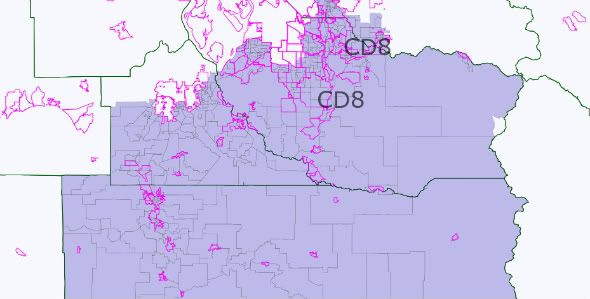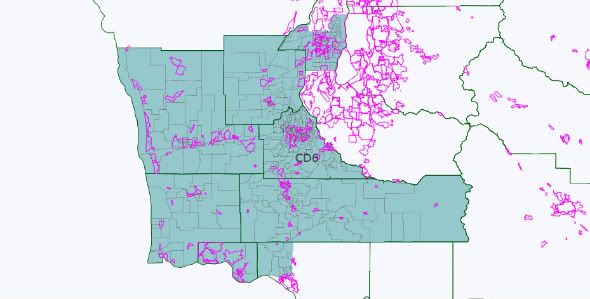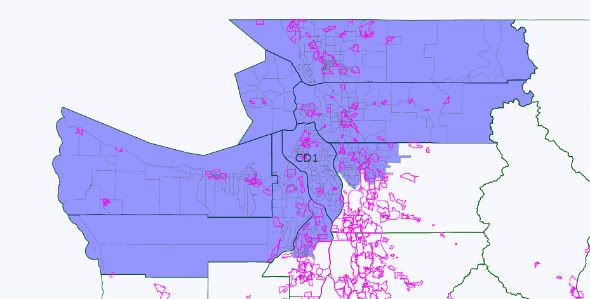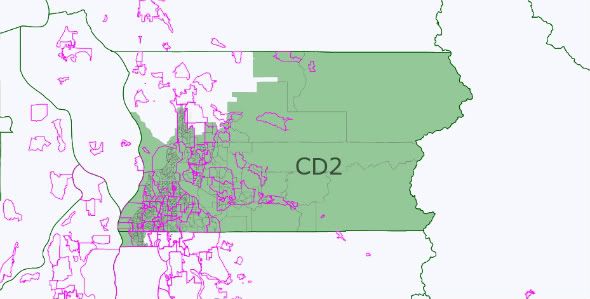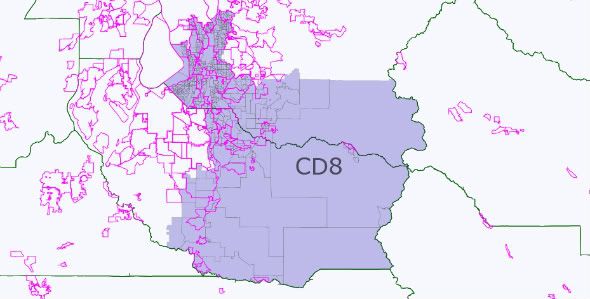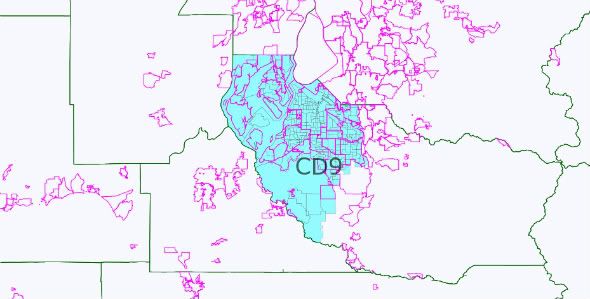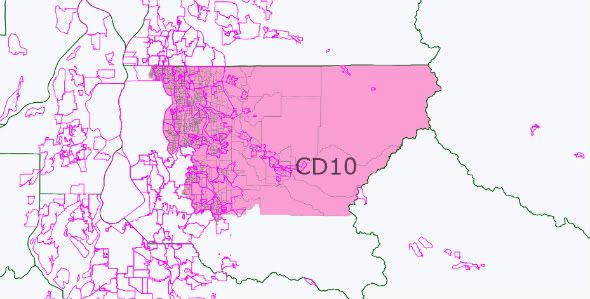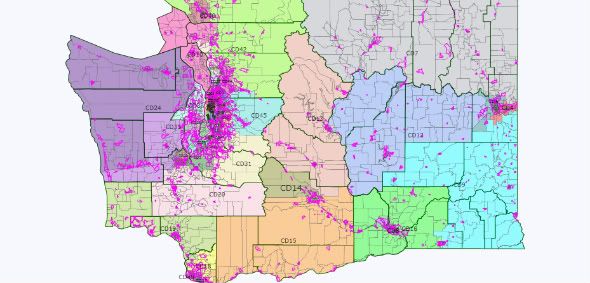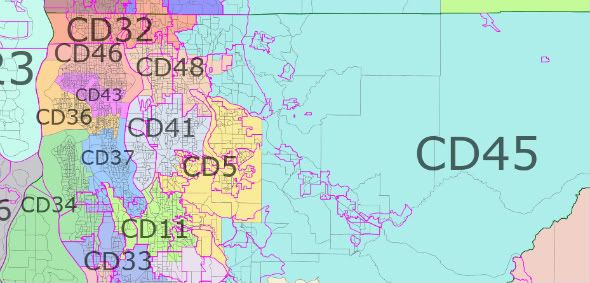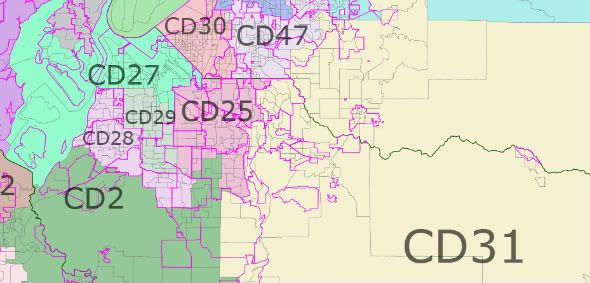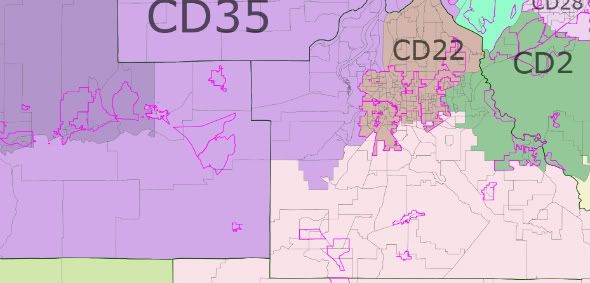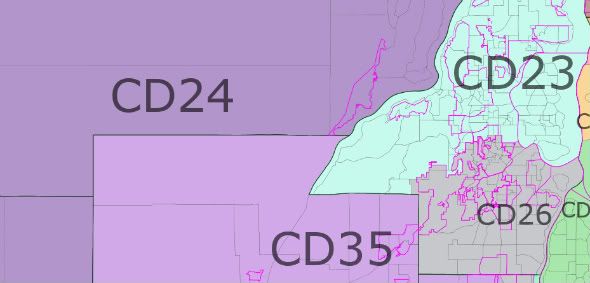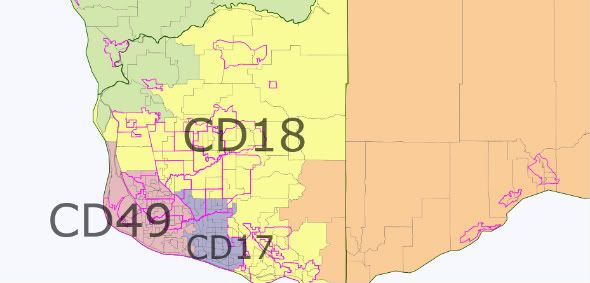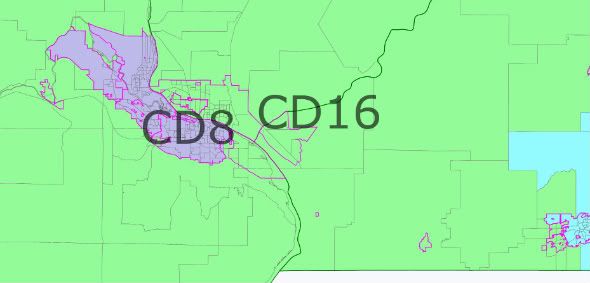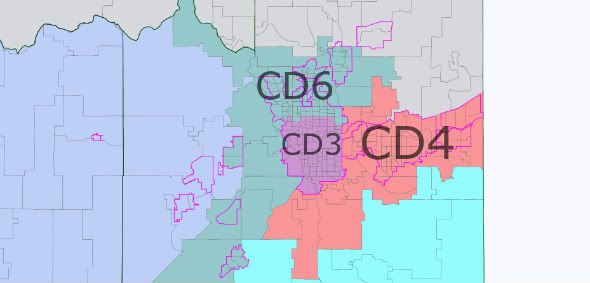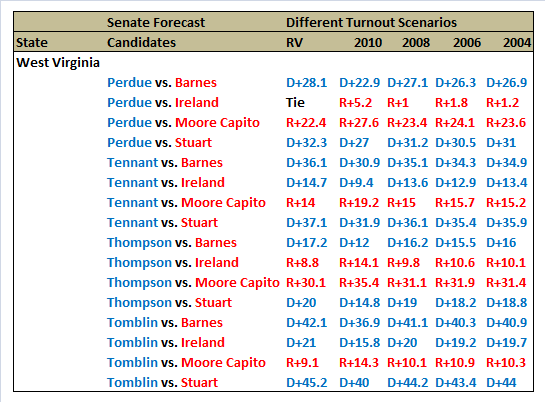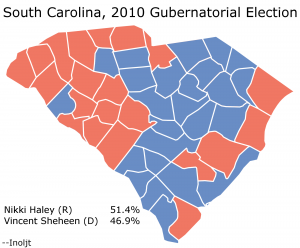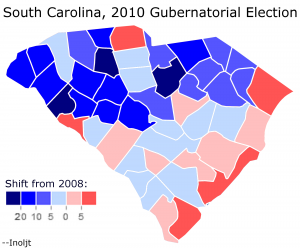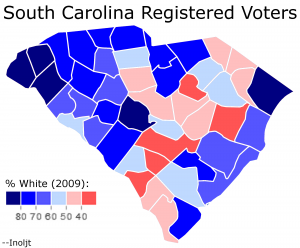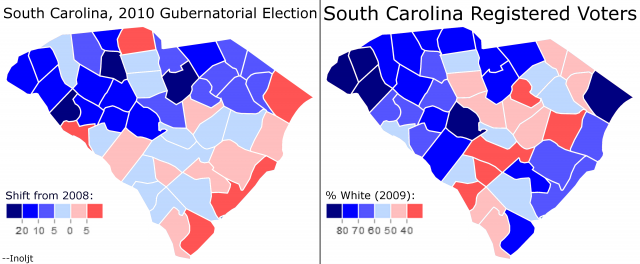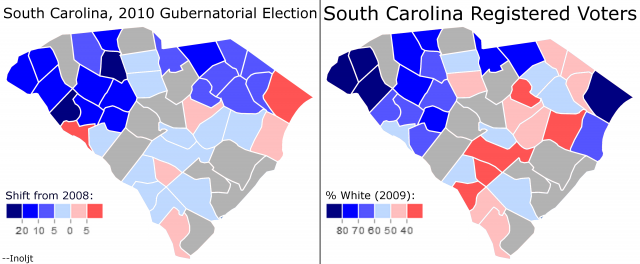(Also at Nevada Progressive)
It is here. After hours of careful line drawing and days of poring over precinct results, the map has arrived. This is Nevada redistricted, baby!
So will the actual final map look something like this? Honestly, I don’t know for sure. Perhaps legislators on both sides of the aisle will want even safer seats and are willing to configure some gruesome looking districts to get them… Or perhaps last minute talks of redistricting collapse as a casualty in an ongoing state budget brawl, leaving the courts to ultimately draw the lines. But most likely, as is usual tradition, The Nevada Legislature will agree on some sort of last minute budget deal, and on a bipartisan redistricting gerrymander.
Still, this year is different. As population continues to swell in Clark County (Greater Las Vegas), political power is slowly-but-surely shifting southward as well. Clark is destined to pick up as many as three legislative seats from the north, as well as a brand new Congressional District. For the first time ever, three Las Vegas area politicians will likely be sent to The House of Representatives.
And for the first time ever, Nevada will likely have three open House seats! It’s looking increasingly likely that both Rep. Dean Heller (R-Carson City) and Rep. Shelley Berkley (D-Las Vegas) will run for the US Senate seat currently held by John Ensign (R-Sleaze), so legislators may very well be drawing the new district map with this in mind. And more importantly, they will likely be keeping in mind that some of their own, as well as a few powerful friends outside, will want to run in each of these open seats.

In drawing this map, I had several objectives in mind. First, I didn’t want to grossly “over-gerrymander” DeLay style, especially since law suits are already being filed here. But while I didn’t want to go overboard, I did clearly have campaign politics in mind while drawing these districts. There are two minority-majority seats, one having a Latino plurality, designed to elect Democrats, and two seats engineered to be as Republican leaning as possible.
So did I succeed? We’ll have to wait and see. Nevada Democrats may very well see unprecedented primary action in NV-01 and NV-04. And while NV-02 and NV-03 are currently held by Republicans, they will have to continue to fight an increasingly tough battle against changing Reno and Las Vegas demographics in the decade to come.
So enough of me blathering on and on… Let’s check out the new districts!

NV-02
(The Green District)
Population: 675,162
69.4% White (73.8% voting age)
The State of Play
First up, the second district. (We’re starting north, and heading south.) Dean Heller currently represents this seat. And even though he’s only done so since 2007, it seems pretty natural for him. He’s a long time Carson City person (both in residence and in Nevada political experience), and he has a conservative-but-not-too-fire-breathing persona that allows him to win comfortably a district that only barely voted for John McCain (by fewer than 100 votes!) in 2008.
However, this will likely change. Again, Heller may very well soon announce his campaign for US Senate, leaving this seat open for the first time since Jim Gibbons left this seat to run for Governor in 2006. And due to Reno area growth, NV-02 has to shed some rural territory to meet the new Census Bureau population guideline. So what happens?
Long story short, NV-02 is now a district that narrowly voted for Barack Obama and Sharron Angle. It’s a closely divided district that will provide a challenge for the typically mighty Washoe Republicans, in that they will need to settle on a candidate who can please GOP primary voters while being able to win enough moderate voters in the general election to keep this seat in GOP hands.
Who’s All In?
Again, Dean Heller looks to be out, but a final decision hasn’t yet be made, so he might still surprise us by staying put. Of course, there has also been plenty of talk of Sharron Angle running (again) for this seat. Even though she carried this district by 5.8% in her Senate run against Harry Reid last year, 2012 will be a Presidential year with higher Reno area turnout. And as we saw on the campaign trail last year, Angle couldn’t even make peace with her fellow Washoe Republicans, so she will have a much harder time holding onto this seat than someone like Heller (who narrowly beat Angle in the 2006 NV-02 GOP primary).
The Wild Cards
Funny enough, I haven’t heard much gossip (yet) over who may be angling for this seat… Other than the obvious. And even though they were just recently sworn into The State Senate (one elected, the other appointed), Reno Republicans Ben Kieckhefer and Greg Brower may be attractive to GOP leaders as they likely search for electable mainstream conservatives to stop Sharron Angle. On the Democratic side, the options aren’t quite as wide. Nevada State Treasurer Kate Marshall does live in Reno, but she hasn’t expressed interest in running for Congress… Can Sharron Angle change that?
2010 US Senate Results
49.6% Angle (R)
43.8% Reid (D)
Estimated 2008 Presidential Results
49% Obama (D)
48% McCain (R)
Estimated Cook PVI: R+4
Early Race Rating: Likely Republican if Dean Heller runs here again, but upgraded to Leans Republican if Heller runs for Senate, and upgraded further to Tossup should Sharron Angle run to replace him!
NV-03
(The Purple District)
Population: 674,792
66.5% White (69.7% voting age)
The State of Play
In the “Republican Wave” year of 2010, Joe Heck barely won with less than 50% of the vote and by fewer than 2,000 votes. That worries Nevada Republicans, and that’s why GOP legislators (especially those in Clark) will likely go to the mat to make NV-03 safer for Heck.
Mr. “War Hero” Heck could barely beat supposedly reviled “Las Vegas LIB’RUL!!!” Dina Titus by fewer than 2,000 votes, and for Heck’s campaign to succeed in a likely more Democratic friendly environment in 2012, this must change. So it has… At least here on my map.
Dina’s political base is widely acknowledged to be the progressive minded, ethnically diverse, labor union heavy, and LGBT friendly confines of The East Side, also known as “Paradise Township“, which consists the older neighborhoods just east of The Las Vegas Strip. So to shore up Heck, I removed The East Side from NV-03 and placed it instead in the newly created NV-04 seat (more on that later!).
Now in addition to that, Heck also had a problem much closer to home. Even though Heck lives in Henderson, both he and Sharron Angle lost a number of Henderson precincts just down the hill from him in uber-exclusive Roma Hills, in the slightly older (meaning built in the 1980s and 90s) and increasingly Democratic friendly neighborhoods of Green Valley and Green Valley Ranch. So to further shore up Heck, I also placed these areas in NV-04 (again, more on that later, including who this also helps!).
Instead, I gave Heck only the most Republican friendly parts of NV-03, and supplemented them with mostly GOP heavy areas previously in NV-01 and NV-02. The perennially stylish and upscale Summerlin development (including “retiree heaven” Sun City Summerlin) is almost entirely reunited here, and joined by a number of previously fast growing Northwest and Southwest valley exurbs. From there, NV-03 almost exclusively picks up the most conservative neighborhoods of Henderson, including wealthy Seven Hills and Anthem (including “retirement resort community” Sun City Anthem), as well as Old Henderson. In addition, NV-03 takes in all the rural Clark County communities (such as Mesquite, Primm, and Laughlin) outside The Las Vegas Valley.
Oh, and of course, all those rural areas previously in NV-02, from Ely to Hawthorne to Pahrump, have to go somewhere. They end up here… But they could end up being a double-edged sword for Joe Heck.
Who’s All In?
From all indications, Joe Heck wants to run for reelection, and this map will surely entice him to do so again. However, he’s not completely out of the woods yet. In fact, like the situation in NV-02, he will have to balance appealing to moderate suburban voters who may very well vote for President Obama again (who STILL won this district in 2008) with keeping “tea party” GOP primary voters happy. It’s no easy task.
The Wild Cards
Should “Tea Party, Inc.” ever fall out of favor with Heck, or Heck just decides to run for yet another higher office later this decade, they have a number of local GOPers to choose from. State Senator Elizabeth Halseth (R-Las Vegas) is seen by many as a rising “tea party” superstar, and State Senator Barbara Cegavske (R-Summerlin) is a long time right-wing stalwart. They’re basically Vegas’ answer to Sharron Angle, and Cegavske has already dropped hints of a future Congressional run. And of course, it’s not like “Chicken Lady” Sue Lowden is ever really leaving the political stage any time soon.
However, they can easily be stopped cold in their tracks. Why? Look at the partisan numbers. Angle only barely won this district last year, and Obama may very well win this district again next year. Joe Heck may have a hard enough time locking down this seat, but the task becomes even more difficult should he ever leave (or be primaried out).
Even though the rural areas (save for Mineral County) may be incredibly difficult for any Democrat to win, a Democrat may once again win this district if he or she can run up the margin enough in Vegas. In the future, the incredibly smart and talented State Senator Allison Copening (D-Summerlin) may have a once-in-a-lifetime opening to go from Carson’s Capitol to Capitol Hill… Or perhaps it will be Henderson Mayor Andy Hafen, someone from a long-time “Nevada royal family” who lives in the slice of Henderson staying in NV-03… Or maybe wonky “deficit hawk”, Clark County Commissioner, and current Las Vegas Mayoral Candidate Larry Brown (D-Summerlin)?
2010 US Senate Results
Angle (R) 48.5%
Reid (D) 46.3%
Estimated 2008 Presidential Results
Obama (D) 51%
McCain (R) 47%
Estimated Cook PVI: R+2
Early Race Rating: Leans Republican

NV-01
(The Blue District)
Population: 675,212
44.4% Latino (38.7% voting age)
31.7% White (37.3% voting age)
14.7% African American (14.7% voting age)

The State of Play
“Your Favorite Congresswoman”, Shelley Berkley, may soon be looking to move to greener pastures. And who can blame her? She’s back in the minority in The House. She doesn’t have the best relationship with Nancy Pelosi. In many ways, she’s boxed in… Unless she stomps outside that box in her signature bedazzled pumps and forges new ground with a Senate run.
So that may very well happen, and if it does we have yet another open seat battle here in Nevada! But unlike NV-02, all the drama will be in the Democratic primary.
Assuming Shelley runs for Senate, her Summerlin area stomping grounds are moved aside to NV-03 and NV-04, so NV-01 can become more of a minority-majority district and help the state’s Congressional Delegation better reflect the diversity of our fine state.
So instead, some heavily Latino Northeast precincts previously in NV-03 are moved here, even as other heavily Latino East Side precincts are shifted from NV-01 to the new NV-04 seat. Now, Latino and African American heavy North Las Vegas becomes the centerpiece of the district, complemented by the Democratic dominant inner city neighborhoods of Las Vegas.
See the recurring theme here? Notice how this affects the 2012 field below.
Who’s All In?
State Senate Majority Leader Steven Horsford (D-North Las Vegas) had been seen as a rising star for years, but now he’s made it to the top. He’s among the most powerful pols in Carson City today, as well as the highest ranked African American in state government alongside Supreme Court Chief Justice Michael Douglas. His career has been illustrious, but it hasn’t always been easy.
He’s now locked in a tough budget battle with Governor Brian Sandoval (R) and GOP legislators, and he is one of the very people overseeing this entire redistricting process. If he truly wants to run for Congress, he has to make miracles happen in Carson City this year, otherwise…
The Wild Cards
“Conventional Wisdom” here in Vegas may again be turned on its head. After all, this is now a Latino plurality seat. State Senator Ruben Kihuen (D-North Las Vegas) knows this first hand as one of the youngest Senators, as someone raised in an immigrant Mexican American family who climbed his way all the way up here, and as someone who’s succeeded despite earning the ire of the once omnipotent Culinary 226. While Kihuen himself hasn’t expressed interest in running, especially after just being elected as State Senator, his name has been floated around.
State Senator John Lee (D-North Las Vegas) actually has signaled interest in running, but he’s probably too moderate to win the Democratic primary in this district.
And sorry, Republicans, but there are virtually no GOP candidates who even want to try here.
2010 US Senate Results
62.9% Reid (D)
32.3% Angle (R)
Estimated 2008 Presidential Results
67% Obama (D)
31% McCain (R)
Estimated Cook PVI: D+14
Early Race Rating: Safe Democratic
NV-04
(The Red District)
Population: 675,294
49.0% White (53.4% voting age)
27.0% Latino (23.2% voting age)
11.5% Asian American (12.0% voting age)

The State of Play
This is the story of “The Comeback Kid”. After being beat up and beat down, it’s time to rise again and shine in the glorious Mojave Desert Sun. But wait, whose comeback are we talking about?
Can it be Dina Titus‘? After all, she’s no stranger to comebacks. After her surprisingly-but-still-painfully close loss to Jim Gibbons in the 2006 Gubernatorial Election, she was written off for (politically) “dead”. But when Democrats wanted to contest NV-03 in 2008 (and Harry Reid’s political team wanted to do away with Jon Porter as a possible 2010 candidate against him) and their originally preferred candidate turned out to be a dud, they had nowhere else to go. Dina obliged, and she then found her redemption… Only to lose it again last year, and by less than 2,000 votes! But is Dina’s story really over?
Or can Rory Reid‘s find a new beginning? He was heralded for ending a painful period of local political corruption culminating in the saucy, racy “G Sting” FBI probe that took down a voting majority of Clark County Commissioners for taking bribes from stripper clubs out to put rival clubs out of business. He was commended for thinking ahead and pushing Clark County to take seriously matters of sustainable growth. He was seen as a real contender, then the 2010 Gubernatorial race happened and he was lost in translation as the Reno powers that be championed Brian Sandoval as their “anointed one”. It was so strange to see Rory’s political career cut short so abruptly last year, but can it be regrown?
UPDATE: Apparently the answer to my earlier question is a resounding Hell to the No! Sorry, but Rory did this to himself… Even if he broke no laws. Score one for Teams Titus and Buckley in Round 1.
Or can Barbara Buckley‘s be reborn? After all, she was seen as the most powerful Assembly Speaker seen in ages. She was the once dismissed “bleeding heart liberal” who then rocked the political establishment with legislative accomplishments on everything from patients’ rights to child welfare to home foreclosure mediation and prevention. And at one point, she looked to be quite the formidable candidate for Governor… Until she stepped aside for Rory Reid… But will she be so willing to step aside again?
Funny enough, all three of these big name Clark Democrats live in this newly created Congressional District. It starts in the more Democratic friendly Summerlin area neighborhoods, then leaps down to Buckley’s home base of Spring Valley, then crosses The 15 and Las Vegas Boulevard to jump into Dina’s East Side turf, then turns south to take in Rory’s ‘hood in the Green Valley part of Henderson. Either there will be some heated back room negotiations among party leaders on who gets this seat, or there will be a primary so exciting it may even eclipse the drama of the 2006 Democratic Gubernatorial Primary that Dina wasn’t “supposed to win”.
The Wild Cards
But wait, the list of candidates isn’t even over yet! There’s another potential suitor possibly waiting in the wings. After Barbara Buckley was termed out of The Assembly last year, John Oceguera became the new Speaker. However, this gig won’t last long. He will be termed out himself next year. And even though he himself hasn’t suggested it, his name has also been rumored for a run here. If he wins, he will be Nevada’s first Native American member of Congress. His challenge will probably be succeeding in this legislative session (a shared goal with Horsford) and not letting the recent drama over Las Vegas/Clark County firefighter pay take him down (even though he’s actually a North Las Vegas firefighter, and they’ve had no labor trouble there).
On the Republican side, however, it’s slim pickings. Perhaps Assembly Member Mark Sherwood (R-Henderson) or State Senator Michael Roberson (R-Henderson) can try, but both are far too conservative to even get close. After all, both only barely defeated their Democratic opponents last year.
2010 US Senate Results
55.9% Reid (D)
39.3% Angle (R)
Estimated 2008 Presidential Results
60% Obama (D)
37% McCain (R)
Estimated Cook PVI: D+7
Early Race Rating: Likely Democratic for now… And probably eventually becoming Safe Democratic barring any major scandal or unusually strong GOP candidate.
So this is my first Nevada map, a map I had with state legislators and certain big name pols in mind. In the future, I may draw more maps under different scenarios, such as Dean Heller and Shelley Berkley staying put in The House, or what might happen should The Legislature come crashing down over the state budget, forcing the courts to draw the final lines.
Let me know what you think and/or if you have your own maps to share. 🙂





